By Wendy Hughes
On the brink of his retirement as the head law enforcement officer of the United States, Attorney General Eric Holder made this announcement: “I think it’s certainly a question that we need to ask ourselves — whether or not marijuana is as serious a drug as is heroin,” Holder said. “[T]he question of whether or not they should be in the same category is something that I think we need to ask ourselves, and use science as the basis for making that determination.”
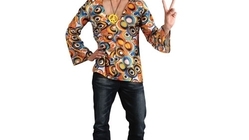 In terms of moral panic, marijuana use was the outstanding violation associated with my generation (Baby Boomers/Woodstock Nation). They say if you can remember the sixties, you weren’t really there. That’s supposed to be a joke about the way smoking or otherwise ingesting pot seems to impair memory, among other effects. It was hard to believe that there was ever a time when it wasn’t illegal, but it turns out it was not only not illicit, but considered medicinal. As recently as 1943, marijuana was part of the United States drug pharmacopeia, according to Dr. Sanjay Gupta.
In terms of moral panic, marijuana use was the outstanding violation associated with my generation (Baby Boomers/Woodstock Nation). They say if you can remember the sixties, you weren’t really there. That’s supposed to be a joke about the way smoking or otherwise ingesting pot seems to impair memory, among other effects. It was hard to believe that there was ever a time when it wasn’t illegal, but it turns out it was not only not illicit, but considered medicinal. As recently as 1943, marijuana was part of the United States drug pharmacopeia, according to Dr. Sanjay Gupta.
How Marijuana became an illicit drug
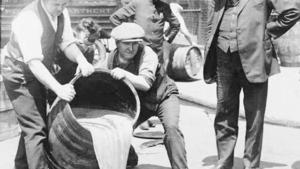 The work of a 20th century bureaucrat, Harry Anslinger (1892-1975) was to criminalize an otherwise harmless and little used drug. Anslinger wasn’t a doctor, he wasn’t a scientist, but he had been an effective government agent during the Prohibition. During the Great Depression, there was intense competition for jobs, and resentment of Mexican immigrants. The plant, used by those immigrants as a recreational drug was demonized and a link made between the drug use and criminal or antisocial behavior. It was a form of discrimination. Anslinger used media campaigns to influence legislation to control the use of marijuana during the 1930s. Modern, updated and more sophisticated public service announcements are here.
The work of a 20th century bureaucrat, Harry Anslinger (1892-1975) was to criminalize an otherwise harmless and little used drug. Anslinger wasn’t a doctor, he wasn’t a scientist, but he had been an effective government agent during the Prohibition. During the Great Depression, there was intense competition for jobs, and resentment of Mexican immigrants. The plant, used by those immigrants as a recreational drug was demonized and a link made between the drug use and criminal or antisocial behavior. It was a form of discrimination. Anslinger used media campaigns to influence legislation to control the use of marijuana during the 1930s. Modern, updated and more sophisticated public service announcements are here.
By the time I was a teenager, it seemed normal to experiment with drugs. I had never even seen the film Reefer Madness, but it didn’t take a rocket scientist to figure out that my friends who were smoking pot were not turning into drug crazed zombies – they seemed to function just fine during the school week, they could party on the weekends, and resume normal activities the next day. This was inconsistent with the urban legends of addiction and subsequent reputation of marijuana as a “gateway drug” to abuse of other substances.
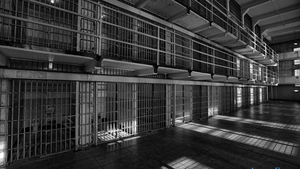 It appeared to me that the most harm being done related to use of pot was being done by law enforcement. Getting high wasn’t the problem; the problem was getting caught getting high. The ACLU has an entire web page devoted to the so-called War on Drugs. It’s really a war on minorities using drugs. One statistic mentioned is that a black person is 3.7 times more likely to be arrested for pot use than a white person, and ten times more likely to be incarcerated. If the drug charge is a third strike, the defendant can be locked up for the rest of his or her life, your tax dollars at work.
It appeared to me that the most harm being done related to use of pot was being done by law enforcement. Getting high wasn’t the problem; the problem was getting caught getting high. The ACLU has an entire web page devoted to the so-called War on Drugs. It’s really a war on minorities using drugs. One statistic mentioned is that a black person is 3.7 times more likely to be arrested for pot use than a white person, and ten times more likely to be incarcerated. If the drug charge is a third strike, the defendant can be locked up for the rest of his or her life, your tax dollars at work.
In a college sociology course, our instructor talked about the difference between an illegal substance, and an illicit one. I had not thought out the subtlety. Illegal means that the use is forbidden by laws. Illicit means that one could use the substance without harm except for the laws. The instructor pointed out that there are a lot of substances that are drugs: aspirin, alcohol, nicotine. But because of statutes, certain ones were illicit: the active ingredients in pot, or the use of otherwise legal drugs at the wrong time of life, ie underage drinking.
The Sociology class also opened my eyes about a phenomenon called entrenched bureaucracy. 2011 was the fortieth anniversary of President Nixon’s declaration of the War on Drugs. It had cost about a trillion dollars and hadn’t made a dent in the demand or supply of pot.
“The Drug Enforcement Administration was created by President Richard Nixon through an Executive Order in July 1973 in order to establish a single unified command to combat “an all-out global war on the drug menace.” At its outset, DEA had 1,470 Special Agents and a budget of less than $75 million. Today, the DEA has nearly 5,000 Special Agents and a budget of $2.02 billion.” – United States Drug Enforcement Administration
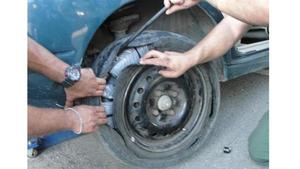 And all those people have jobs. They are not going to stand still and let a change in attitude by a President who “didn’t inhale” or any of them, send them to the unemployment office. After all, presidents are only elected for four years at a time compared to the lifetime careers of professional law enforcement officers. No president can pull the rug out from under their livelihoods, let alone the hundreds of thousands of ordinary policemen, highway patrolmen, sheriffs, prison guards, prosecutors and parole and probation officers, who would see their jobs go up in smoke (so to speak) if the laws, or even the classification of marijuana as a schedule one drug, along with heroin, and more useless and dangerous than cocaine, were changed.
And all those people have jobs. They are not going to stand still and let a change in attitude by a President who “didn’t inhale” or any of them, send them to the unemployment office. After all, presidents are only elected for four years at a time compared to the lifetime careers of professional law enforcement officers. No president can pull the rug out from under their livelihoods, let alone the hundreds of thousands of ordinary policemen, highway patrolmen, sheriffs, prison guards, prosecutors and parole and probation officers, who would see their jobs go up in smoke (so to speak) if the laws, or even the classification of marijuana as a schedule one drug, along with heroin, and more useless and dangerous than cocaine, were changed.
Controlled Substances
There are five classifications of controlled substances: schedules 1 through 5.
Schedule 1 controlled substances: Substances in this schedule have no currently accepted medical use in the United States, a lack of accepted safety for use under medical supervision, and a high potential for abuse.
Schedule 2 controlled substances: Substances in this schedule have a high potential for abuse which may lead to severe psychological or physical dependence.
Schedule 3 controlled substances: Substances in this schedule have a potential for abuse less than substances in Schedules I or II and abuse may lead to moderate or low physical dependence or high psychological dependence.
Schedule 4 controlled substances: Substances in this schedule have a low potential for abuse relative to substances in Schedule III.
Schedule 5 controlled substances: Substances in this schedule have a low potential for abuse relative to substances listed in Schedule IV and consist primarily of preparations containing limited quantities of certain narcotics.
- Schedule 1: marijuana, heroin, LSD, ecstasy, and magic mushrooms.
- Schedule 2: cocaine, meth, oxycodone, Adderall, Ritalin, and Vicodin.
- Schedule 3: Tylenol with codeine, ketamine, anabolic steroids, and testosterone.
- Schedule 4: Xanax, Soma, Darvocet, Valium, and Ambien.
- Schedule 5: Robitussin AC, Lomotil, Motofen, Lyrica, and Parepectolin.
The catch 22 for rescheduling of marijuana is that because it is classified under schedule 1, it can’t even be tested to confirm that it does have medical use, does not have a high potential for abuse or any other kind of reevaluation.
Dr. Sanjay Gupta explains: “On August 14, 1970, the Assistant Secretary of Health, Dr. Roger O. Egeberg wrote a letter recommending the plant, marijuana, be classified as a schedule 1 substance, and it has remained that way for nearly 45 years. My research started with a careful reading of that decades old letter. What I found was unsettling. Egeberg had carefully chosen his words:
“Since there is still a considerable void in our knowledge of the plant and effects of the active drug contained in it, our recommendation is that marijuana be retained within schedule 1 at least until the completion of certain studies now underway to resolve the issue.”
Not because of sound science, but because of its absence, marijuana was classified as a schedule 1 substance.”
I’m not a Pot Head – I’m a Patient
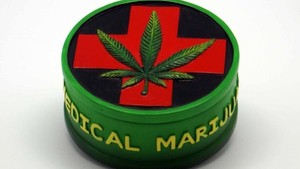 In some states, legislation has been passed that either legalizes or decriminalizes pot use recreationally or for medical use, compassionate care. Federal law still trumps state law where there is a conflict. Still – in the 1970s it was unimaginable to anyone that there would be dispensaries in almost every strip mall in the San Fernando Valley. There are doctors that diagnose health conditions and prescribe medicinal pot. Local elected officials are still trying to stem the tide – but read again the words of Attorney General Eric Holder: “I think it’s certainly a question that we need to ask ourselves — whether or not marijuana is as serious a drug as is heroin,” Holder said. “[T]he question of whether or not they should be in the same category is something that I think we need to ask ourselves, and use science as the basis for making that determination.”
In some states, legislation has been passed that either legalizes or decriminalizes pot use recreationally or for medical use, compassionate care. Federal law still trumps state law where there is a conflict. Still – in the 1970s it was unimaginable to anyone that there would be dispensaries in almost every strip mall in the San Fernando Valley. There are doctors that diagnose health conditions and prescribe medicinal pot. Local elected officials are still trying to stem the tide – but read again the words of Attorney General Eric Holder: “I think it’s certainly a question that we need to ask ourselves — whether or not marijuana is as serious a drug as is heroin,” Holder said. “[T]he question of whether or not they should be in the same category is something that I think we need to ask ourselves, and use science as the basis for making that determination.”
Certainly that is a very good strategy, especially since alcohol and tobacco, known to harm health, aren’t even on the schedule of controlled substances. If ever there was a case of moral panic vs scientific evaluation of the evidence, the War on Drugs is one.
_________________________________________________________________________________________________
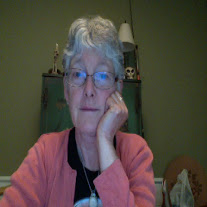 Wendy Hughes is the Editor of the Healthy Skepticism channel of Skeptic Ink Network– a skepticism activist in the Los Angeles area. Wendy is the co founder of The Odds Must Be Crazy, a blog about coincidences that explains probability and psychology to help defeat superstition.
Wendy Hughes is the Editor of the Healthy Skepticism channel of Skeptic Ink Network– a skepticism activist in the Los Angeles area. Wendy is the co founder of The Odds Must Be Crazy, a blog about coincidences that explains probability and psychology to help defeat superstition.
